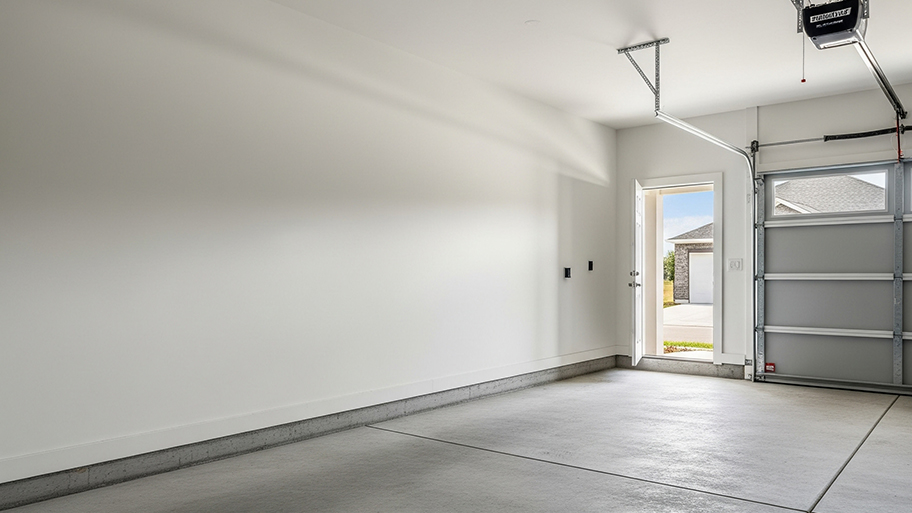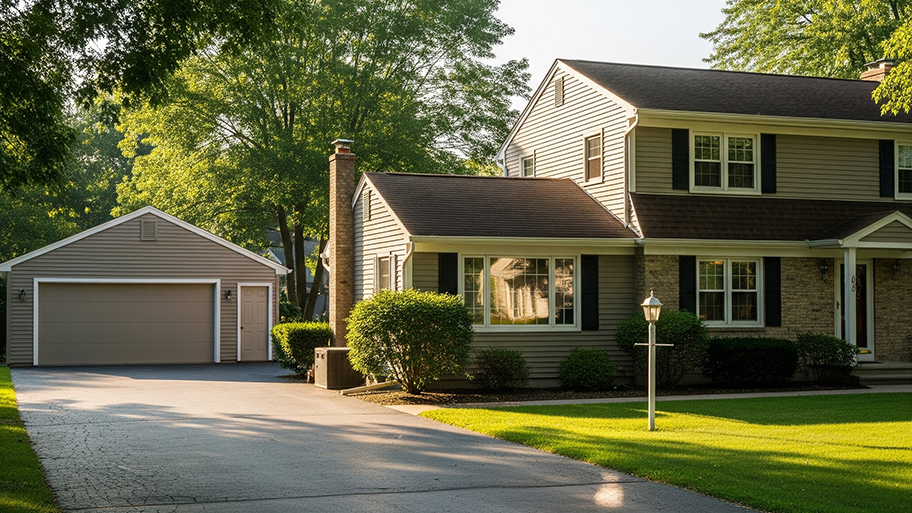
The cost to drywall a garage depends on the size, materials, labor, and more. This guide will help you budget for installing drywall in your garage.
Garages can be a swanky spot to call home


A detached garage doesn't count as living space.
An attached garage may count as living space if it meets specific requirements.
Converting your garage to a livable space may increase your home's value.
If you've ever wondered whether a garage is considered living space, You're not alone. After all, your garage may have a decent amount of square footage, which is appealing if you ever plan to sell your home. The simple answer is that an attached garage may be considered living space and can increase the livable square footage of your home—but only under certain conditions.
If you put a couch or bed in a room, does that turn it into a living space? Not quite. To qualify as a living space, a part of your home must meet strict standards. The walls and floors must be finished, and the ceiling must be a certain height.
Appropriate wall and floor finishings must be long-lasting or permanent. Examples of appropriate wall finishings include gypsum, wood panels, or plasterboards. Examples of proper finishings for flooring include concrete, hardwood, carpeting, or vinyl.
At least half of the room must have a ceiling height of at least 7 feet and a height of no less than 5 feet in sloping areas for the room to count as living space. There can be areas with a ceiling height under 5 feet, but those areas won't count toward the livable space.
Another important consideration for living space is usability. To count as living space, an area must be usable at all times of the year. If you live in an area that gets very cold in the winter, the room must be heated and enclosed.
Things get a little trickier when you try to count a garage as living space for an appraisal or when listing your home.
The garage needs to meet all the requirements for living space described in the preceding section, and it must be accessible from the rest of your home.
Simply put, a finished room in a detached garage doesn't count as living space. However, a finished room in an attached garage, that you can access directly from your home, does.
There are more cases when a garage doesn't count as living space than when it does count. For example, you can't consider a garage in the livable square footage of your home if any of the following apply:
Less than half of the area has a ceiling height of over 7 feet.
The garage is unheated.
To get into the garage, you need to exit your home.
To get into the finished area of the garage, you need to first go into the unfinished area of the garage, then go up the steps to get to the finished part (when the garage is otherwise attached to your home).
The floor and walls of the garage aren't finished to the same degree as the floors and walls in the rest of your home.

If you're feeling a little cramped in your home, turning the garage from a space where you store your vehicles to a usable, livable area can make sense. There are a few steps to follow when converting your garage.
First, check with your municipality to determine what permits you'll need. Permitting rules vary by area, but you can expect to need them if you're installing new plumbing at electricity at the minimum. Redoing your garage without the proper permits can come back to bite you when you want to sell your home. It can also get you in trouble when work is taking place.
Next, consider how you'll use the space. Do you want to keep part of the garage as a garage and remodel a space in the back or upstairs? Or, would you rather turn the garage entirely into livable space? If that's the case, you may want to convert the garage door to an entry door along with finishing the walls and floors.
It's a good idea to work with a local garage remodeler on the project. They can help you plan out the space and arrange for the work to be done. If you also need plumbing and electrical work, the remodeler can subcontract that out for you and take care of permits.
From average costs to expert advice, get all the answers you need to get your job done.

The cost to drywall a garage depends on the size, materials, labor, and more. This guide will help you budget for installing drywall in your garage.

The cost to build a detached garage depends on the size, materials, labor, and more. Read this guide to learn more about detached garage costs.

How much does it cost to insulate a garage? Discover insulation options, prices, and expected and unexpected circumstances that affect the project cost.

Does your garage need insulation? Weigh the pros and cons of insulating a garage to make the right choice for the comfort of your home.

If you need to build extra living space at your home, this guide on how to convert a garage into a bedroom shows you all the steps.

Asking yourself, "Who do I call to install power in my garage?" You've got options. Read on to learn who to hire to add electricity to your garage.